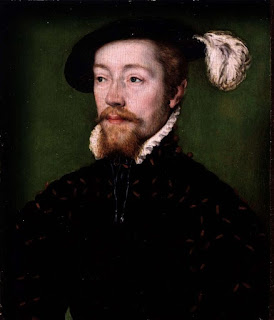Mary Queen of Scots { Part 2 of 2 }
_-_Google_Art_Project.jpg)
Regency of Mary of Lorraine. First Marriage of Mary Stewart. . In 1554, Arran, who had been created Duke of Chatelherault by the French king, went back to France, and Mary of Lorraine became Regent . The league with France was drawn still closer by the marriage of the Queen with Francis the Dauphin . Francis became King of France in 1559. The crown-matrimonial of Scotland was then granted to him, so that the two countries were for a short time united under one crown. On the strength of this the French began to give themselves airs of superiority which the Scots could ill bear from strangers, and before long they became well-nigh as unpopular as the English had been. The Regent was unconsciously doing her best to foster this feeling of dislike by placing foreigners in offices of trust, above all by making [Pg 93] Frenchmen keepers of the strongholds. But there was another influence now at work, the desire of religious ref...
_-_Google_Art_Project.jpg)




